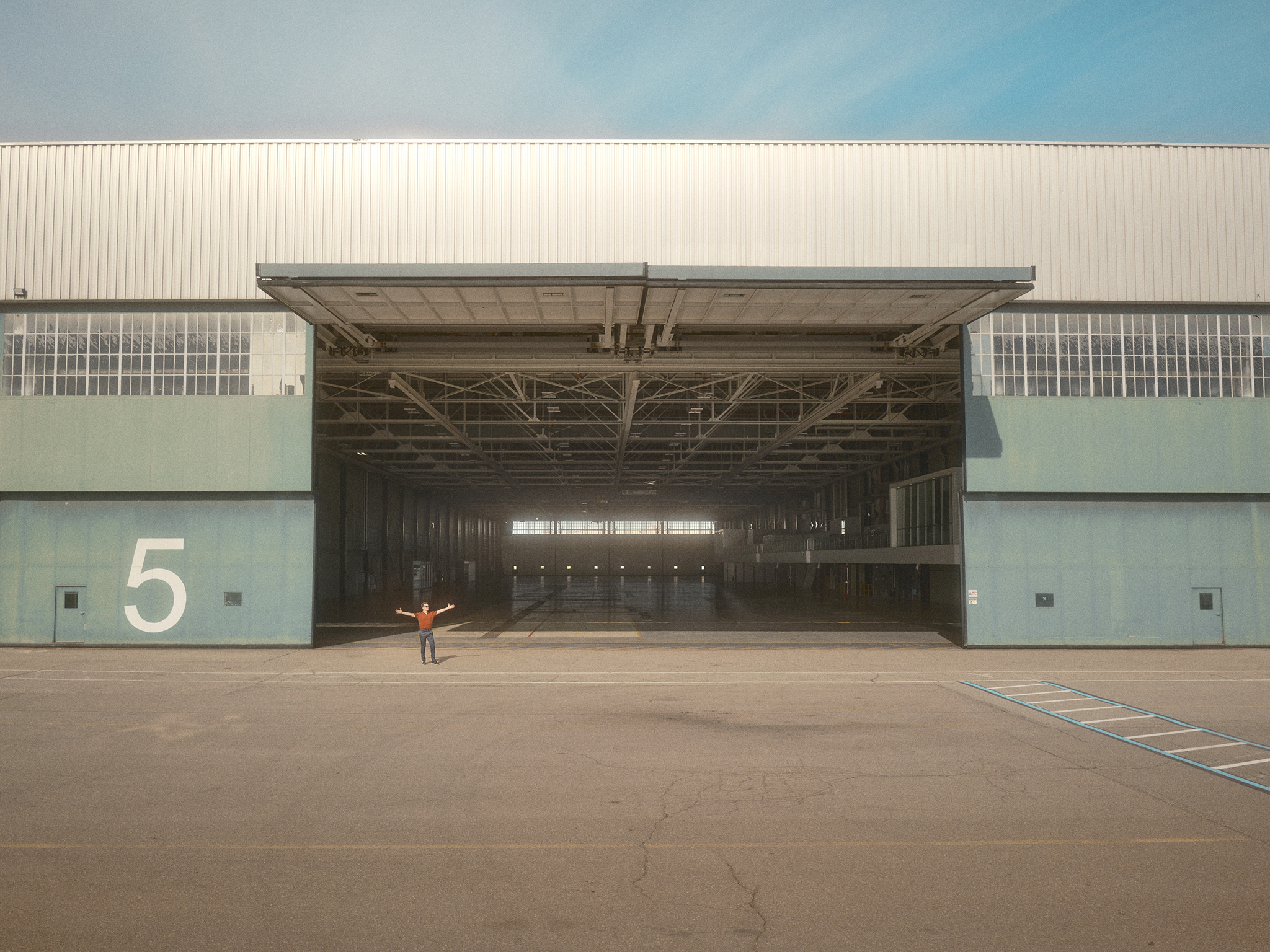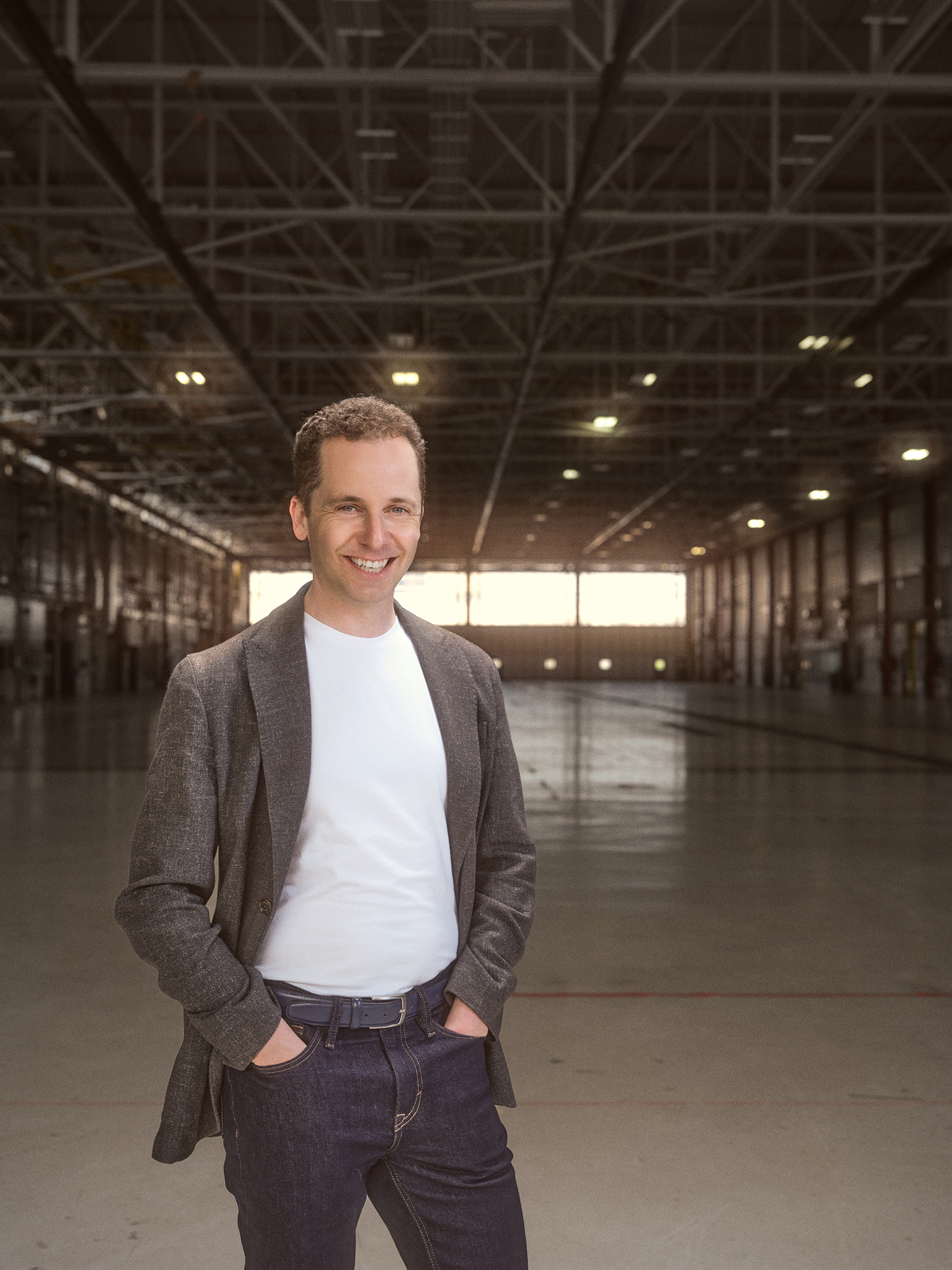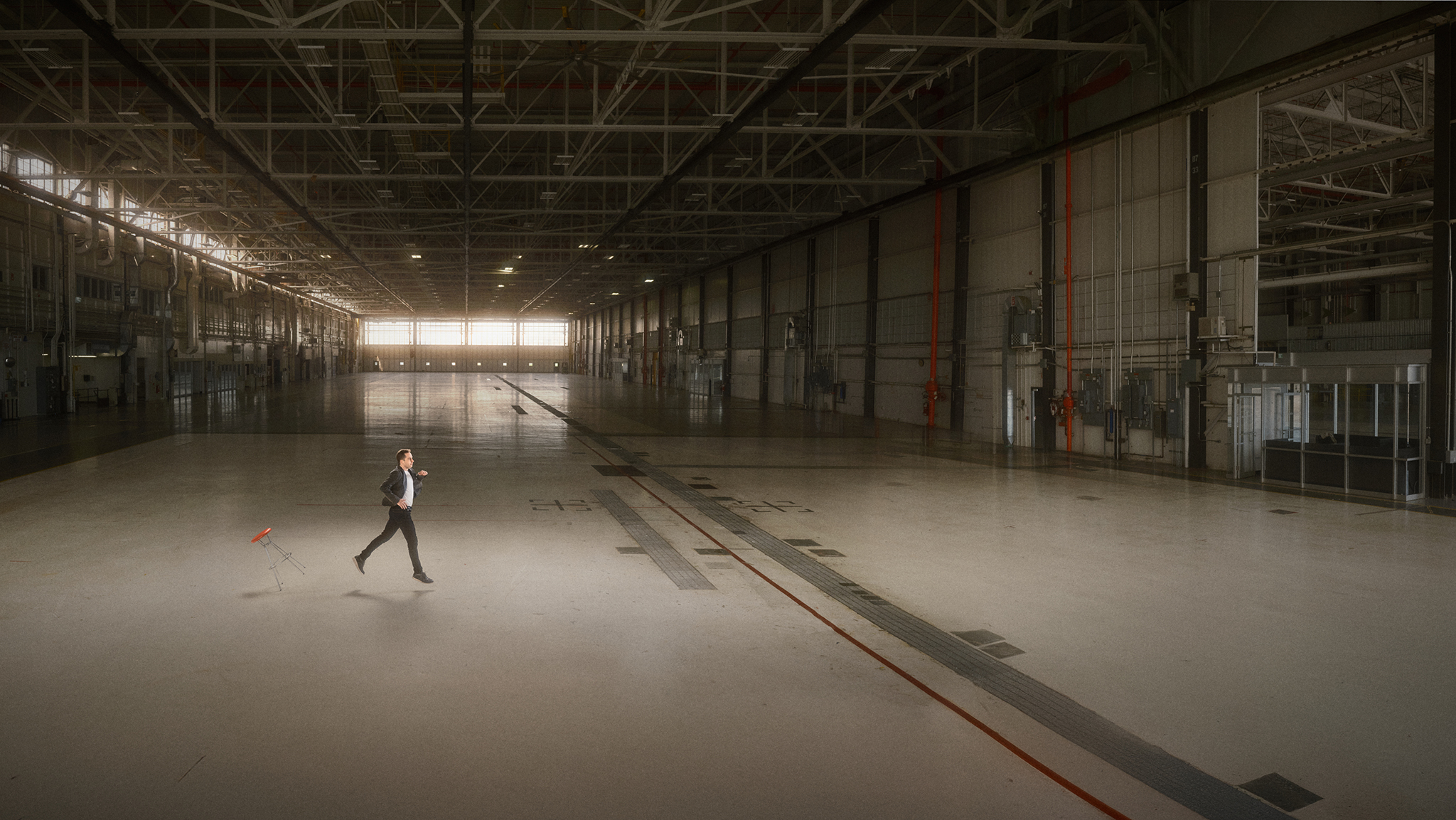Sonic Boom
by Deirdre Kelly
photography by Chris Robinson
This summer, the north end of Toronto is set for a transformation few could have imagined just a few years ago. On the vast grounds of the former Downsview Airport, Rogers Stadium – a 50,000-seat outdoor venue – will debut with a lineup that includes Stray Kids, Coldplay and Blackpink. But the concerts are only the beginning.
The 150-hectare Downsview lands, recently rebranded as YZD – a nod to its airport code – are being reimagined as a place where culture, community and new ideas converge. The new neighbourhood is not far from York University’s Keele Campus. Over the next three decades, the former airfield will be transformed with new parks, cultural venues, public spaces and residential areas – including condos and other housing – creating an entirely new district for Toronto.
We’re honouring the legacy of this place as a gathering ground, but we’re also building momentum for its future as a series of neighbourhood destinations
At the centre of this reinvention is Mitchell Marcus (BA ’04), executive director of site activation and programming at Northcrest Developments. His mandate: turn a closed, industrial landscape near York into a living, breathing part of Toronto’s future.

“We’re honouring the legacy of this place as a gathering ground, but we’re also building momentum for its future as a series of neighbourhood destinations,” Marcus says. “The new Rogers Stadium is more than just a concert venue, it’s the first step in reconnecting Toronto to this former airport.”
The scale of the project is matched by the ambition behind its programming. Every Saturday this summer, the site will host a new farmers’ market, the playful art installation Runway Rivers, and the return of Play on the Runway, which opens the old airstrip to bikes, scooters and families. There’s also a street art and skateboard festival, an Indigenous learning garden and weekly free events designed to welcome everyone from local residents to first-time visitors.
For Marcus, the key is to make YZD accessible and relevant from the outset, even as construction and development continue in the background. “We have the rare opportunity to establish the soul of the place before the buildings go up,” he says. “That means testing ideas, listening to the community and making sure our programs reflect the diversity and creativity of Toronto’s north end.”

One example stands out. When YZD launched Hangar Skate, a winter skating program, the expectation was that children would be the main audience. Instead, many adult newcomers to Canada showed up to try skating for the first time. “It was a real surprise,” Marcus says. “It showed us there are gaps in public services we can help fill.”
Accessibility is a guiding principle. While some events require tickets, there’s always a slate of free programming – everything from DJ skate nights for teens to STEM workshops for kids. “Curating our own events lets us respond quickly to what the community wants and needs,” he says.
But making it all happen is no small feat. Much of the site is still a former runway, with limited power and water. Programming must adapt to shifting construction schedules and the realities of a space not built for public gatherings. For Marcus, these constraints are more than logistical hurdles, they’re invitations to innovate and adapt. “Sometimes, the limitations force us to come up with more inventive solutions,” he says. That willingness to adapt, he believes, is what allows true community to take root.
It’s a philosophy shaped by his time at York University, where an arts management course challenged him to turn creative ideas into real-world plans – a skill he’s carried from founding The Musical Stage Company (now one of Canada’s leading not-for-profit musical theatre organizations) to reimagining Downsview Airport. “York gave me the foundation to turn artistic ideas into lasting community impact,” he says. “The work at YZD has been a most extraordinary canvas to put those ideas into practice.”
In a world where we feel ever more isolated, YZD’s community-led approach lets visitors feel the welcoming breath the site generates
The transformation is personal for Marcus, and its impact on York University will be tangible. Once the $30-billion redevelopment is complete, YZD will be just four subway stops from York’s Keele Campus, bringing the University closer to the heart of Toronto than ever before.

That spirit of connection is echoed in the next generation of York students now helping to shape the site. Among them is Moath Ahmed, an honours film production major and site ambassador, who has witnessed first-hand how YZD’s approach is fostering a sense of belonging. “In a world where we feel ever more isolated, YZD’s community-led approach lets visitors feel the welcoming breath the site generates,” he says. “The attention to detail – like engaging local artists for murals and installations – makes it feel like a place that belongs to everyone.”
As the summer unfolds, the vision for YZD is clear: a once-inaccessible stretch of runway, now open to possibility. “I want people to arrive unencumbered and inspired,” Marcus says. “And I want everyone to leave knowing they’ve left their thumbprint on this place, by seeding fun, creativity and joy into its evolving story.” ■